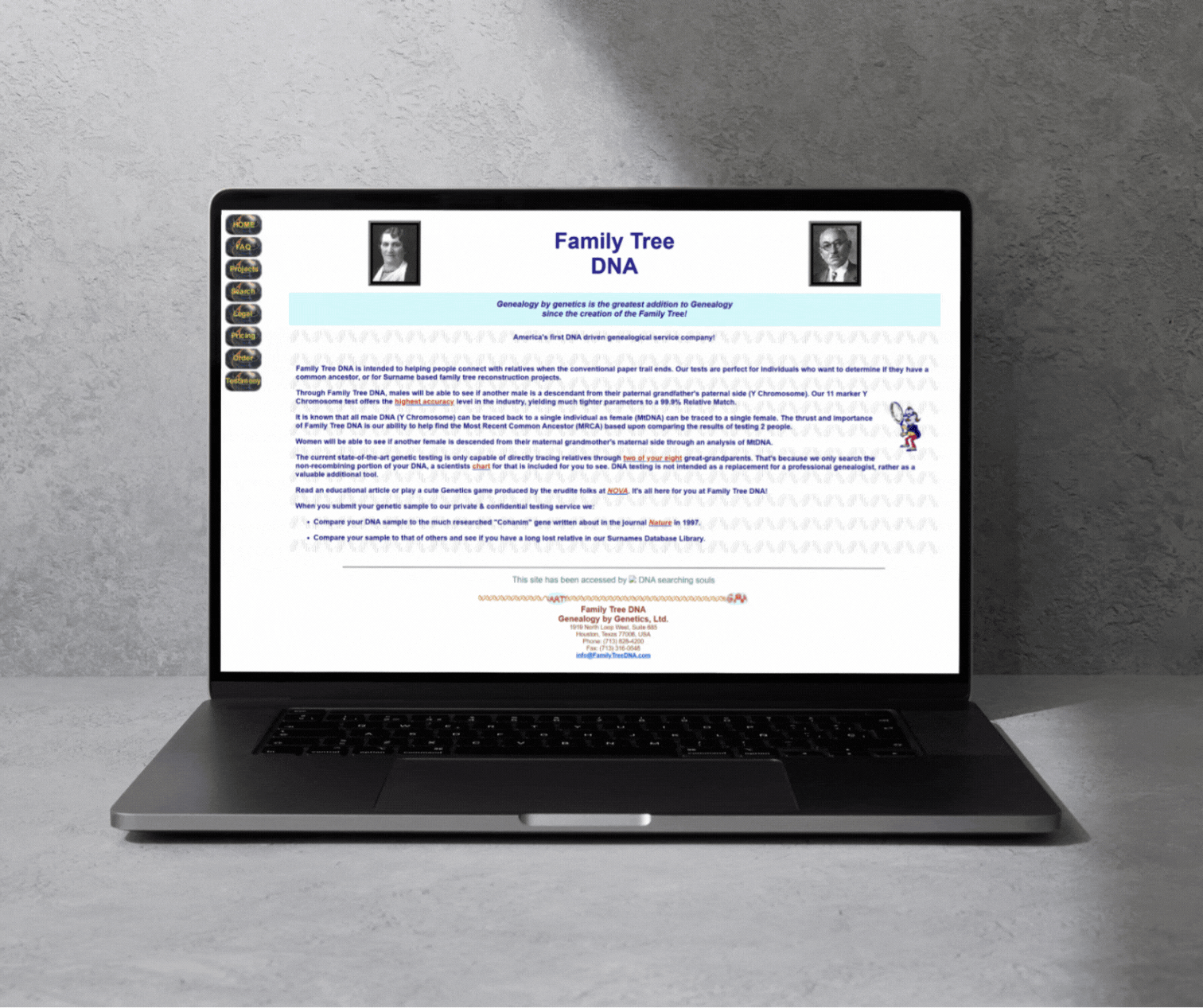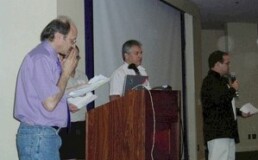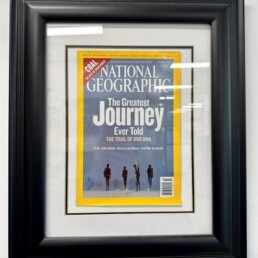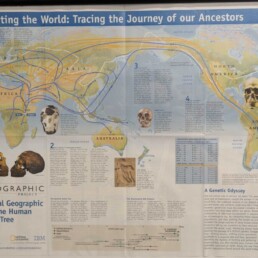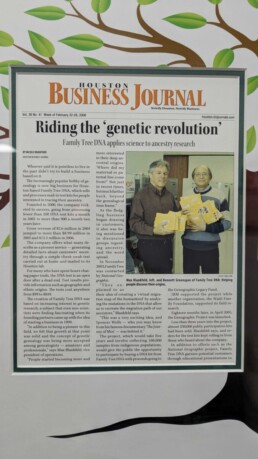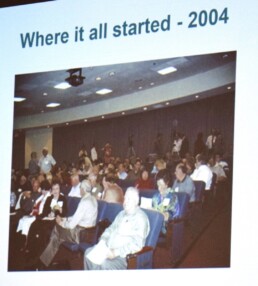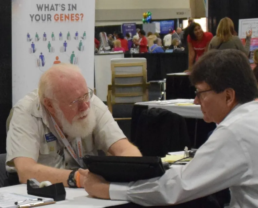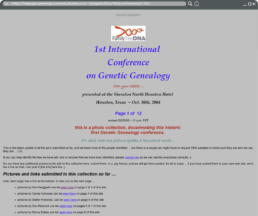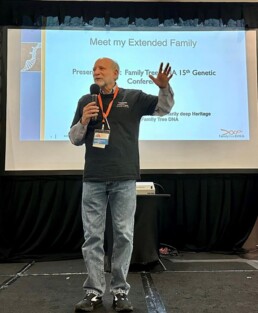By: Courtney Eberhard
For FamilyTreeDNA’s 25th anniversary, founder Bennett Greenspan reflects on the company’s earliest days, the rise of genetic genealogy, and the global community helping drive discovery today.
In celebration of FamilyTreeDNA’s 25th anniversary, I sat down with founder Bennett Greenspan to reflect on the journey from a niche concept to a global movement. From the launch of the first Y-DNA tests to partnerships with world-renowned institutions, Greenspan shared the story behind FamilyTreeDNA’s innovations, the community that made it possible, and his hopes for the future of genetic genealogy.
Let’s Start At The Beginning
“It’s hard to believe it’s been 25 years,” Greenspan began, reflecting on a journey he described as both exhilarating and deeply fulfilling. The field has evolved dramatically since FamilyTreeDNA launched the first direct-to-consumer genetic tests for ancestry research.
How ISOGG Helped Legitimize Genetic Genealogy
When FamilyTreeDNA first entered the market, there was widespread skepticism. Greenspan vividly recalled the hands-on approach he used to engage curious passersby at trade shows: “when they got in front of my booth, I would stick out my hand, and I would hold their hand and gently try to drag them into the FamilyTreeDNA booth so that I could discuss it.”
The founding of the International Society of Genetic Genealogy (ISOGG) was instrumental in bringing clarity and cohesion to the field. ISOGG united early adopters and advocates, helping build trust and understanding across the emerging landscape of genetic genealogy.
The National Genographic Project Transformed the Field
A major turning point came in 2005 when FamilyTreeDNA partnered with the University of Arizona to support National Geographic’s Genographic Project. The project sold:
- 10,000 kits on day one
- 30,000 kits in the first month
- 110,000 kits in the first year
- Over 700,000 kits total
The project overwhelmed lab capacity and revealed the need for scalability. To meet National Geographic’s requirement for “redundancy”—a contingency plan ensuring operations could continue uninterrupted—FamilyTreeDNA established its own laboratory in Houston. This move allowed the company to gain greater control, improve turnaround times, and prepare for long-term growth.
Building a Toolkit: The Roll Out of Y-DNA, mtDNA, and Family Finder
FamilyTreeDNA started with Y-DNA, then quickly added mtDNA, and ultimately rounded out its offerings with the Family Finder test. Each of these tools offered a different lens into our ancestral past. Curious about the reasoning behind this rollout, I asked Greenspan to walk me through the strategy—and what guided the order of these major launches.
Why Start With Y-DNA?
Greenspan’s interest began with a personal genealogical mystery involving the Nitz family. “When I started working on genealogy in 1999, I was focused on my mother’s mother’s father—the Nitzes,” he recalled. “The first need for genetic genealogy was when I found another Nitzes in South America, who came from the same village that my family came from. And so logically they were related. But that’s not enough for us genealogists, right? You know, we need paper, you need proof. We need something to make this sacrosanct.”
That quest for proof led him to the Y-chromosome, passed through the paternal line, making it the most logical tool for his investigation. FamilyTreeDNA launched with a 12-marker Y-DNA test.
While FamilyTreeDNA initially focused on Y-DNA, customer demand quickly led to the launch of an mtDNA test. Mitochondrial DNA, or mtDNA, is passed down from mothers to all their children, making it a valuable tool for tracing maternal ancestry. This combination of customer feedback and practical innovation allowed FamilyTreeDNA to move faster and further in making genetic genealogy accessible to a broader audience.
The Customer-First Ethos of FamilyTreeDNA
Greenspan shared that one of the pillars of FamilyTreeDNA’s success has been its early innovation and deeply customer-centric approach. In the early days, Bennett personally answered customer questions and engaged in one-on-one conversations that made people feel understood and confident in their decision to test. That level of accessibility built trust and helped transform a curious idea into a movement.
Introducing Family Finder: Bringing Autosomal DNA to the Toolkit
Autosomal DNA testing entered the consumer market in late 2007, with 23andMe offering tests that included reports on ancestry, traits, and potential health risks. While their primary focus leaned toward health-related insights, they did offer genealogical data that appealed to some family history researchers.
FamilyTreeDNA, however, was founded on—and has always prioritized—genealogical discovery. When FamilyTreeDNA introduced its own autosomal test in 2010, it was as a complement to its robust suite of tools centered around Y-DNA and mtDNA. These tests remain foundational to the company’s mission, offering unmatched precision and historical depth for those tracing their ancestral lines.
More Than An Idea: Genetic Genealogy Takes Off Overnight
The moment that proved FamilyTreeDNA was more than just an idea came just days after launching the website. Greenspan recalled how a friend encouraged him to go live early: “I said, ‘Well, I’m really not 100% ready to go yet,’ and he goes, ‘Look, nobody’s gonna look at it anyway. It’s a Friday afternoon.'”
Sure enough, that weekend, a customer visited the new site and called Greenspan on Monday with an order for 20 kits. “I got off the phone and I went to my wife and said, ‘You know, this is like a real business. I just sold four thousand dollars in DNA tests.’ That’s when I knew we weren’t just onto something—we had something.”
What followed confirmed it. Greenspan learned firsthand the challenges of scaling a product that had suddenly captured global interest. The university lab then processing samples had limited capacity. “It made our delivery times long. I was two or three months out, and people were calling constantly asking when their results would be ready. But you know what? No one ever asked for a refund. They didn’t want to wait—but they were willing to.”
He went on to reflect, “And I found that particularly interesting, because there wasn’t anybody else to run their results, and they were very pleasant about the fact that they were in the queue. They just wanted to see their results. But they never asked for their money back.”
To Greenspan, this was more than patience—it was a sign of trust. “You don’t really know if you have a business or just an idea until someone is willing to spend money with you.”
“Genealogy is a Team Sport”
Greenspan emphasized that the success of FamilyTreeDNA was made possible in large part by its Group Project Administrators. These dedicated leaders took on the roles of recruiter, educator, and guide—building surname projects, interpreting results, and creating dynamic, grassroots networks that turned interest into insight.
One particularly influential figure in this community was the late Bob McLaren, a beloved titan in the world of genetic genealogy. Greenspan recalled, “Out of an abundance of caution, I used to tell people, ‘Do your genealogy, and when you can’t figure out if you’re related to this guy or not, then have him test and someone from your family test, and then you’ll know whether it’s the right line or not.’ I didn’t want to be seen as the guy who mercilessly hawked DNA tests.”
Bob, however, saw things differently. “Your method is wasting time,” he told Greenspan. “And I’m an old guy, and I don’t have that time to waste. What I tell people to do straight away—if you have our surname, do a DNA test. I’ve got so many people with that surname, I’ll tell you which two or nine or 34 people in our group you’re related to. And then we’ll try to figure out how you’re related to those guys—but we’ll already know that you are.”
Greenspan explained why genealogists and Group Project Administrators understood the value of DNA testing early on, even when results show no match. “You know even ‘No’ to a genealogist is an answer. You don’t always get a yes—you want a yes. But when you don’t get a yes, it also allows you to take and cut that name, or those names, off so that you don’t need to worry about how you’re related to them. We’ve already determined you’re not. Go back and focus all your time on the people whose Y chromosome was the same as yours, so you end up not wasting any time.”
Bennett Greenspan’s Advice for New DNA Testers
For those new to DNA testing, Greenspan offered three simple yet powerful pieces of advice—rooted in decades of experience and a deep understanding of genetic genealogy.
- Call the helpline—speaking to someone in real time helps demystify the process.
- Watch videos from RootsTech or FamilyTreeDNA conferences.
- Use the basics: fewer mismatches = closer relation. DNA is paint-by-number for genealogy.
Greenspan emphasized that results are meant to empower, not confuse. Clear markers and intuitive tools make DNA research more accessible than ever.
Where We Go From Here
When I asked Greenspan what message he would like to share with the community, he had two main points he wanted to drive home:
A Call for a “Genetic Census”
As FamilyTreeDNA celebrates 25 years, Greenspan called on the community to think of genetic testing as a global census. Everyone who participates helps build a more detailed tree of human history. Distant cousins with small mutations can reveal big insights.
The History Book in Our Cells:
“There’s a history book written into your cells,” Greenspan said. “But there’s more written there than you realize.”

About the Author
Courtney Eberhard
Marketing Coordinator for FamilyTreeDNA
Courtney Eberhard, the Marketing Coordinator at FamilyTreeDNA, is driven by a profound passion for genealogy, fueled by her personal journey as an adoptee with roots in the LDS church. Through research with FamilyTreeDNA, she has also been able to uncover her son’s father’s indigenous roots in Mexico and provide context for his origins.
In her spare time, she finds joy in connecting with her family and friends during cookouts, cheering for the Houston Astros, and cherishing her role as a dedicated full-time parent.
